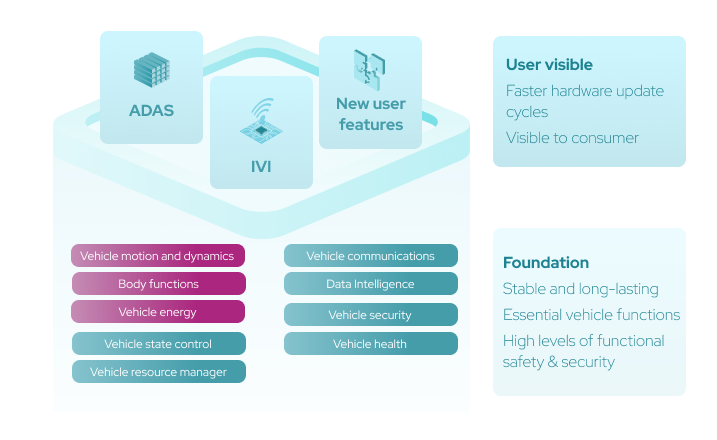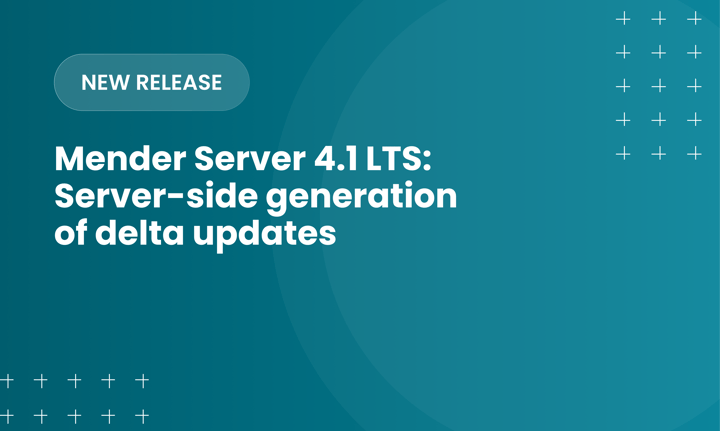Software-defined vehicles: an ecosystem approach & OTA strategy


By 2040, Accenture predicts revenue from digitally-enabled services will hit $3.5 trillion USD, a tenfold increase. To reach that reality, “to compete effectively in this new world,” Accenture states, “OEMs must transform across their entire organization.”
Similar to other industry’s legacy giants, the challenge in the automotive industry is how to compete in a software-defined world. The industry must embrace software and technology as the linchpin for not just their business’ success but survival. To realize the software-defined vehicle (SDV), the automotive ecosystem must transition from a hardware-centered philosophy to a software and services-centric one, from Tiered supply chains to an ecosystem of technology partners.
In this evolution to the software-defined vehicle, time to market is more critical than ever before. Automotive OEMs must compete today or risk becoming obsolete.
Reinforcing the future of the automotive industry, the software-defined vehicle was the crux at NXP Tech Days Detroit. Over a thousand engineers, practitioners, and innovators gathered from OEMs, Tier1s, and partner companies to discuss and collaborate about these cars of the future, how to support innovation, manage the transition to software-centricity, and strategies to drive forward.
Top Takeaways from NXP Tech Days
The proliferation of technology amongst endless possibilities often obscures the next steps. However, NXP Tech Days focused not only on new technology but how to move forward as an industry. Across the presentations, some underlying takeaways can be seen:
1: Every OEM is developing a Software-defined vehicle architecture
The software-defined vehicle concept has reached mainstream acceptance, as shown in these event indicators:

The underlying reason:
OEMs realize their customers demand better digital experiences from their vehicles, and if they do not listen, then they will become irrelevant.
As a result, OEMs have 2030 and 2035 roadmaps focused on the SDV vision.
The software-defined vehicle unpins an “upgradeable” future for the automotive industry, literally and figuratively. But the complexity is immense. Where they once managed predominantly hardware, OEMs must not coordinate hardware with software, the integration of the two across the vehicle, and create a solution that scales across all vehicle classes. Add in organization design, cost, internal and external capabilities, risk management, and safety – the upgradeable future can seem out of reach. Yet, it is still required.
Starting at the basics, to ‘upgrade’ anything at scale requires consistency; data must be standardized to be usable, software must be compatible, etc. To create consistency, there needs to be collaboration across the landscape. Hardware and software need to be compatible, data produced and delivered needs to be usable, and the vehicle must remain safe and always function.
To that end and to unleash the freedom to innovate, OEMs must think of the car in terms of a layered platform. Lower layers should be standardized, common, and hardware-agnostic. Hardware can then be sourced from different vendors than the software. Leveraging this approach, OEMs can control both the complexity and costs of the SDV. OEMs need to take an architecture approach to designing the SDV, complete with scalable platforms and collaboration.

2: Over-the-air updates for the whole SDV are foundational
All software requires updates, whether for new releases, updates, or bug and security patches. The first version of the software released into production is rarely the last.
Thus, the software-defined vehicle must have the ability to receive updates, and the updates must be automated over the air (OTA) in order to be cost-effective. As the amount of software increases within the vehicle, so too will the number and frequency of updates; bringing vehicles into physical locations for a software update becomes untenable.
In addition to general maintenance, OTA updates will accelerate the time to market.
Today, several automotive-grade devices already support OTA updates to a degree. For example, the NXP S32K microcontroller can run FreeRTOS, which includes some level of OTA update support. However, the problem is not really updating a single device inside a vehicle.
The problem to solve is how to update the whole vehicle consistently, which contains tens or even more than one hundred devices that depend on each other. The challenge of updating the whole vehicle consistently is often referred to as software configuration management (SCM), and only more modern and purpose-built OTA solutions solve this. For example, Mender offers SCM functionality, called a “whole system update,” implemented through the “Orchestrator.”
3: An ecosystem mindset should be embraced
The automotive industry’s past foray into software highlights key challenges and lessons learned. The path forward is not in creating and recreating bespoke, proprietary solutions to hundreds of different facets within the SDV – assuming expertise, stability, and scalability in all of them. This approach has been tried, leading to market fragmentation, supply chain problems, significant costs, and untenable management and maintenance requirements. Similarly, the distributed ownership of these bespoke solutions resulted in little to no reusability, which (back to takeaway #1: Every OEM is developing a Software-defined vehicle architecture) limits innovation and progress.
Related to the architecture approach to SDVs, OEMs should embrace an ecosystem mindset. Leverage the deep and specialized expertise across the industry instead of recreating solutions and, in turn, making new silos. In addition to technical competence, an ecosystem mindset will also keep costs manageable, allowing the larger ecosystem to realize economies of scale in their respective niches.
Specifically, automotive OEMs have traditionally only worked with specialized Tier1s, who focus on hardware and mechanics. In the future, successful automotive OEMs will build internal technology competence and separate hardware from software to lower cost. Technological competence combined with differentiating hardware from software will enable more competition in supply channel sourcing while fostering direct collaboration with software-only vendors.
4: Open source is gaining momentum and acceptance
Avoiding sole source or vendor lock-in is a principle seen throughout the history of the automotive industry. The ecosystem supporting the SDV is no different.
Open source solutions (OSS) are already leveraged in many key and complex functions, such as Android for IVI. OEMs will continue to, and need to, leverage OSS within their non-differentiating building blocks. In doing so, OEMs will create economies of scale within the ecosystem, foster greater innovation via standardization over customization, and focus internal talent on differentiating their core services and capabilities. Alternatively, the OEMs who continue to spend resources on the lower layers instead of reusing open source will eventually lose in the marketplace due to inefficient use of resources compared to their competitors.
The open source approach aligns with the new way of thinking for OEMs, where they take charge of the technology rather than “having someone to call” (such as Tier 1). Unlike proprietary software, especially custom software developed by Tier1s, open source enables OEMs to innovate freely and avoids lock-in.
Driving toward an upgradeable future
The future of the SDV is leveraging best-in-class, tried-and-true solutions that are open and compatible to create consistency and realize the upgradeable future. This was one of the key underlying messages at NXP Tech Days. Across facets, openness will lead to freedom, and freedom will create richness throughout the industry.
Learn more about the future of the SDV in the NXP blog: Expanding OrangeBox Ecosystem Accelerates Vehicle Architecture Transformation.
Recent articles
The differences between the US FDA’s device approval process and the EU’s medical device regulation (MDR): An essential dual-compliance framework for global manufacturers
Why OTA updates are now mission critical for future-proofed device lifecycle management
What’s new in Mender: Server-side generation of delta updates
Learn why leading companies choose Mender
Discover how Mender empowers both you and your customers with secure and reliable over-the-air updates for IoT devices. Focus on your product, and benefit from specialized OTA expertise and best practices.



